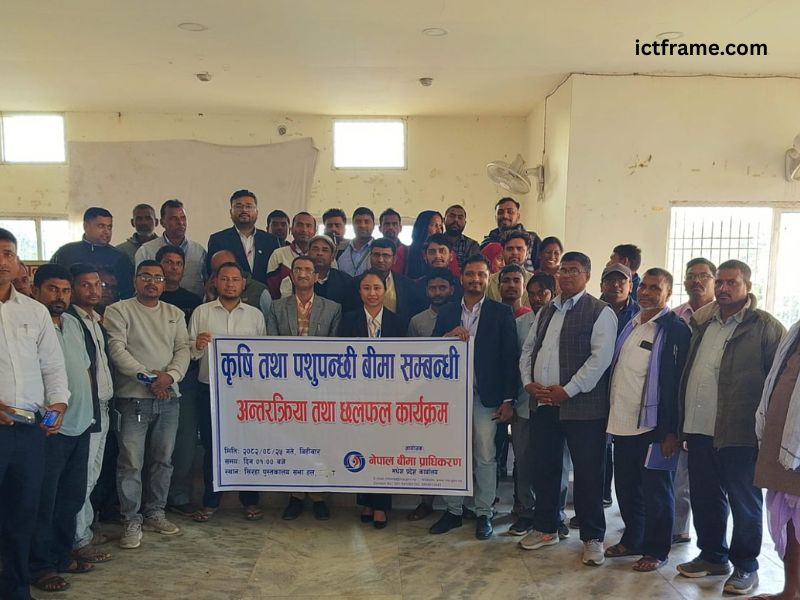Become a Data Scientist in Nepal: Your Ultimate Guide (2024)
23rd July, 2024
Become a Data Scientist in Nepal! This comprehensive guide covers essential skills, in-demand tools, and the booming job market. Learn how TechAxis’s Data Science Course can help you launch your successful data science career in Nepal.
The need for Data Scientists is growing tremendously in Nepal and this is due to the increased advancement in technology and productivity innovations in almost every part of the sector. It is evidenced from the industry reports and job advertisements that this particular area has experienced a considerable increase in the number of Data Scientist roles.
Become a Data Scientist in Nepal
There is recent research showing that compared to the previous year, the demand for skilled data professionals in Nepal has risen over 50 percent. A career in Data Science is not only fulfilling but also beneficial since one can be involved in unique projects with the potential to revolutionize companies and even society in the future. Data Scientists are responsible for making what seems like magic: predicting the next action that the consumer will take, enhancing patient experiences, and managing supply chains – all of which make this job demanding yet fulfilling.
To the best of my knowledge, the following guide is a one-stop place for putting together significant information for aspiring Data Scientists in Nepal. It includes all basic knowledge of Mathematics, statistics, and programming languages, and the complete list of the best Data Science courses offered in Nepal along with online and offline classes. They can also get useful tips to help persons who are seeking employment such as how to prepare a unique resume, preparing for a job interview, and the art of networking. Also, it elaborates upon how these professionals advance their careers: through ongoing education, specializing in areas that are a step up from the basics of coding, such as machine learning and AI, and through creating a body of work in the form of real-world projects. In effect, by following the above guide, one can map out a clear career plan in an attempt to become a Data Scientist creating numerous opportunities and having an impact on this growing field.
Building Your Foundation
● Educational Background:
Regarding the way to pursue a career in data science, the type of education you have can greatly affect your abilities and opportunities in the field. The highly relevant fields of study are Statistics, Computer Science, and Mathematics.
- Statistics which enhances the skills of analyzing and interpreting data forms the strong background of the course. This field of study consists of such classes as probability, hypothesis testing, and statistical inference. Statistics is one of the critical components of machine learning as the skills above are valuable when one is required to analyze data distributions, and patterns and make useful forecasts.
- Computer Science affords technical competencies required in the application of data science. They include computer programming, algorithms, and data structures, which are critical when constructing and deploying models of structures of data. Computer science skills also facilitate the management of big data and the creation of programs that can work at a mass scale.
- Linear Algebra and Calculus are some of the most important parts of Mathematics used in data science. Linear algebra is used in machine learning for data transformations and model optimization while calculus is used to understand the fundamentals of the algorithms and optimization functions used in training of machine learning models.
Thus, for those who will not get the traditional degrees, there are several opportunities in online courses and boot camps. Sources like Coursera, edX, and other such online sources offer Data Science Specializations and even certifications for such programs which enables its learners to practice. Courses by institutions such as TechAxis emphasize practice and application where learners are quickly placed in the job market; some of these are even equipped with tools to help learners find jobs.
● Core Skills:
Several core skills are vital for success in data science enlisted below:
- Programming in Python/R: Two languages are extensively used in data science, and these are Python and R. Python is taken by numerous people due to its ease of use as well as the existence of many libraries such as Pandas, NumPy, and Scikit-Learn. The language R is particularly strong in dealing with statistics, thus making it suitable for use in data exploration and statistical analysis.
- Statistics: Statistics is an important competency area for any person who wishes to pursue the data science profession. It enables a person, especially those with professional practice, to understand methods of the analysis of statistical data, sound predictions, and experiments. The role of statistics is to facilitate the formation of experiments, outcome confirmation, and decision-making based on facts.
- Data Analysis: Being a sub-skill to data analysis, this particular skill involves processing information from data. There is data cleaning which involves removing irrelevant data from the data set, data exploration which is very crucial in determining the patterns and trends of data, and data visualization which helps in identifying data patterns and trends. For that reason, data analysis is a crucial part of any company since using data means that people will make the right decision and have a plan for the future.
With these educational backgrounds and basic competencies, it specifies the competencies in problem-solving of data-related issues, the competencies in persuading decision-making by data, and the competencies in contributing new solutions for a variety of industries.
Mastering the Craft
Essential Tools and Technologies:
- Python Libraries:
- Pandas: One of the tools used in data pre-processing, Pandas assist in tasks that include cleaning and reshaping of the data. It is characterized by high scalability and is critical in data manipulation processes.
- NumPy: Supports large arrays and matrices, it also comes equipped with mathematical functions for computation. Complex data manipulations and numerical analysis are done with the help of this module called NumPy.
- Scikit-learn: All important for the implementation of machine learning algorithms, scikit-learn is a set of tools for classification, regression, and clustering. They make it easy to create, train, assess as well as deploy machine learning models.
- SQL: It is asserted that SQL is a language for relational database management and manipulation where one can run operations such as Select, Update, Join, and others. It allows us to extract and manipulate data easily, which is essential to manage and combine the large data stored in databases.
- Cloud Platforms:
- AWS (Amazon Web Services): Offer elastic cloud computing-based data storage, computing capacity, and artificial intelligence. AWS deals with complex computing and serving that large amounts of data and models require.
- Google Cloud Platform (GCP): Also provides the capabilities for processing data and big data, for example, BigQuery for fast querying and Google Cloud Storage for data storage.
- Microsoft Azure: It covers services such as data storage and processing, data analysis, and machine learning as some of the solutions that can be expanded and adapted to larger needs.
● Develop Your Portfolio:
Portfolio creation is crucial to demonstrate your data science skills and acumen backed up by providing real-life experience. An updated and well-developed portfolio shows that the candidate is capable of providing solutions to different challenges from the projects displayed. Some examples of tasks can be, for example, determining the possibilities of improving farming based on the analysis of data on local agriculture or studying tourism trends to improve marketing. Such projects also prove you have adequate knowledge of relevant industry issues when presenting your technical skills. Having a variety of quality projects under one’s belt can help improve job prospects and overall credibility in the data science profession.
The Nepali Data Science Landscape
● Job Market and Opportunities:
Data Scientists are profoundly in demand in Nepal in the IT sector and sectors like finance and health. Competing for talents in the IT sector, companies look for data professionals to spearhead innovations and the proper development of software. Data science plays an important role in the finance industry in areas such as credit scoring, fraud detection, and determining investment opportunities. Data is critically important for health care caring for patients, planning and allocation of resources as well as for research purposes. For job search, suggested sources include a local website and a newspaper such as MeroJob and Kantipur Job respectively, and even a social professional network such as LinkedIn. Furthermore, recruitment agencies operating in the local area or industry-specific portals may feature relevant vacancies.
● Networking and Community:
Professional contacts are very important in the career path of a Data Scientist and keeping abreast with the current trends in the market. In Nepal, attending local meetups and conferences like Data Science Nepal and Nepal Data Science Summit can help one connect with other professionals. Engaging in Facebook groups or LinkedIn communities that are related to data science in Nepal also opens up a way to get access to resources, jobs and collaboration opportunities. These networks assist in the sharing of knowledge, and learning, and enhance the prospect of the career path in data science.
Benefits of Taking TechAxis’s Data Science Course
Taking a Data Science course in Nepal with TechAxis offers a program designed to equip you for this in-demand field. Their curriculum focuses on the core skills needed by data scientists, including:
- Programming: You’ll learn Python, a versatile language widely used in data science for tasks like data manipulation, analysis, and machine learning.
- Statistics and Machine Learning: Gain a solid foundation in statistical methods and machine learning algorithms used to extract insights from data.
- Data Wrangling and Visualization: Develop expertise in cleaning, preparing, and analyzing data, and learn to present your findings through effective data visualization techniques.
TechAxis goes beyond theory by providing instructors with real-world industry experience. You’ll benefit from their practical knowledge as you tackle project-based learning that simulates real-world data science scenarios. This hands-on approach helps you build a strong portfolio showcasing your abilities to potential employers. Their career support doesn’t stop at graduation, with assistance in resume development, interviewing skills, and navigating the data science job market.
Conclusion
Becoming a Data Scientist in Nepal involves several critical steps, the main skills that can also be of great importance are having skills in programming languages like Python or R, mastery in statistical and data analysis; and having a portfolio of working projects. It is imperative to make use of tools and techs like Python libraries, SQL, and cloud tools. Job seeking and connecting with other data scientists and related professionals in Nepal’s gradually emerging field are also relevant.
Some of the things that can be done to prepare for a Data Scientist position in Nepal are listing good knowledge of statistics, computer science, or mathematics, and advanced skills in crucial areas such as Python programming, statistics, and data analysis.
Build up a diverse and practical set of projects and incorporate the use of such tools as Python subsets, SQL, and cloud platforms. Vendor engagement and research of employment openings in the data science industry, of course. The best solution, If you want to leap in your career the Data Science course TechAxis is perfect for you as it is the Best IT Training Institue in Nepal. TechAxis has all the primary attributes that prepare the student for a successful career with its diverse curriculum, experienced faculty, and project-based learning.
Don’t wait any longer, TechAxis right away to get started on your executive career path!








